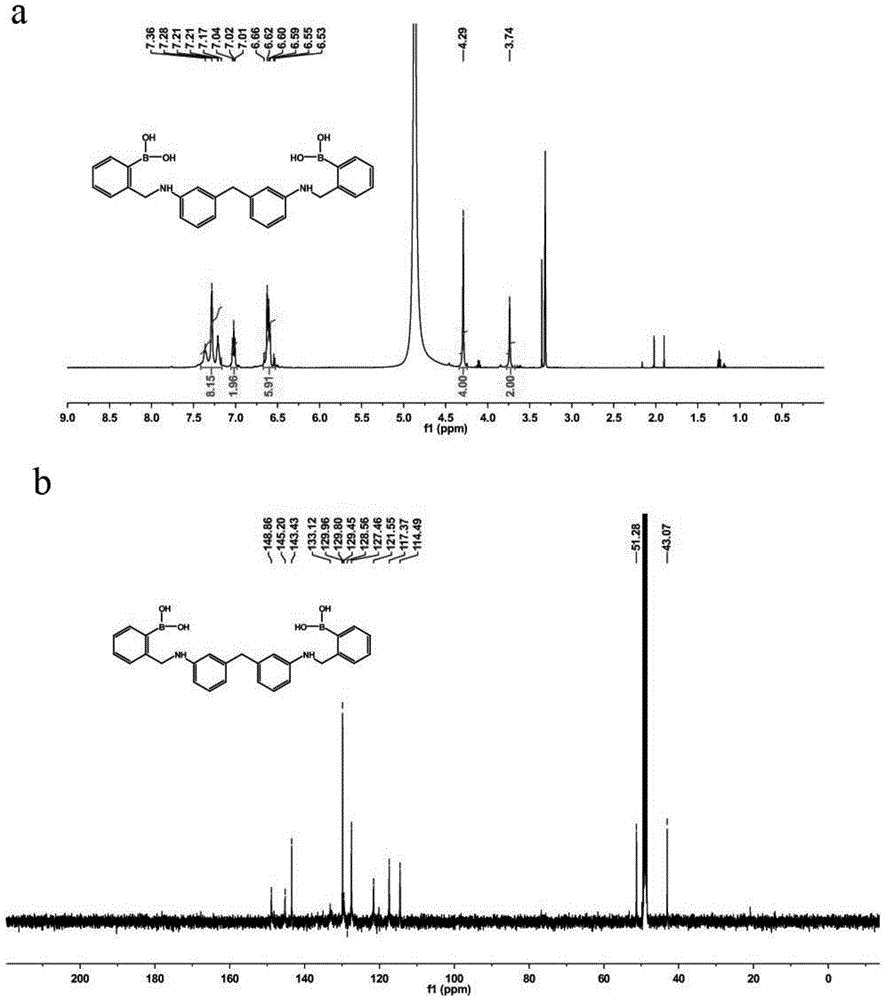Enzyme-free potentiometric glucose sensor and detection method thereof
A glucose sensor and potentiometric technology, which is applied to instruments, measuring devices, scientific instruments, etc., can solve the problems of cumbersome operation, high cost, unsuitable rapid detection of glucose, etc., and achieves the effects of low cost, simple production, and easy miniaturization.
- Summary
- Abstract
- Description
- Claims
- Application Information
AI Technical Summary
Problems solved by technology
Method used
Image
Examples
Embodiment 1
[0028] The present invention uses [methylene-bis(3,1-phenylaminomethyl-2,1-phenyl)] diboronic acid (see figure 2 ) is used as an example to detect glucose as a recognition molecule, which can be prepared according to the description in Document 5. The operation steps are as follows:
[0029] (1) Preparation of polymer membrane electrodes
[0030] Weigh 196mg of polyvinyl chloride, 196mg of o-nitrophenyloctyl ether, and 4.54mg of tridodecylmethylammonium chloride, dissolve them in 3.5mL of tetrahydrofuran, stir them evenly, and pour them into a glass plate with an inner diameter of 3.5cm. in the glass ring. After the tetrahydrofuran was volatilized, the membrane was cut into small discs with an inner diameter of 3 mm using a puncher and pasted on the tip of a pipette with a PVC tube at the bottom. Use 10mM NaCl solution as the inner filling solution and activation solution to activate the electrode, ready for use.
[0031] (2) Optimization of pH conditions
PUM
 Login to View More
Login to View More Abstract
Description
Claims
Application Information
 Login to View More
Login to View More - R&D
- Intellectual Property
- Life Sciences
- Materials
- Tech Scout
- Unparalleled Data Quality
- Higher Quality Content
- 60% Fewer Hallucinations
Browse by: Latest US Patents, China's latest patents, Technical Efficacy Thesaurus, Application Domain, Technology Topic, Popular Technical Reports.
© 2025 PatSnap. All rights reserved.Legal|Privacy policy|Modern Slavery Act Transparency Statement|Sitemap|About US| Contact US: help@patsnap.com



